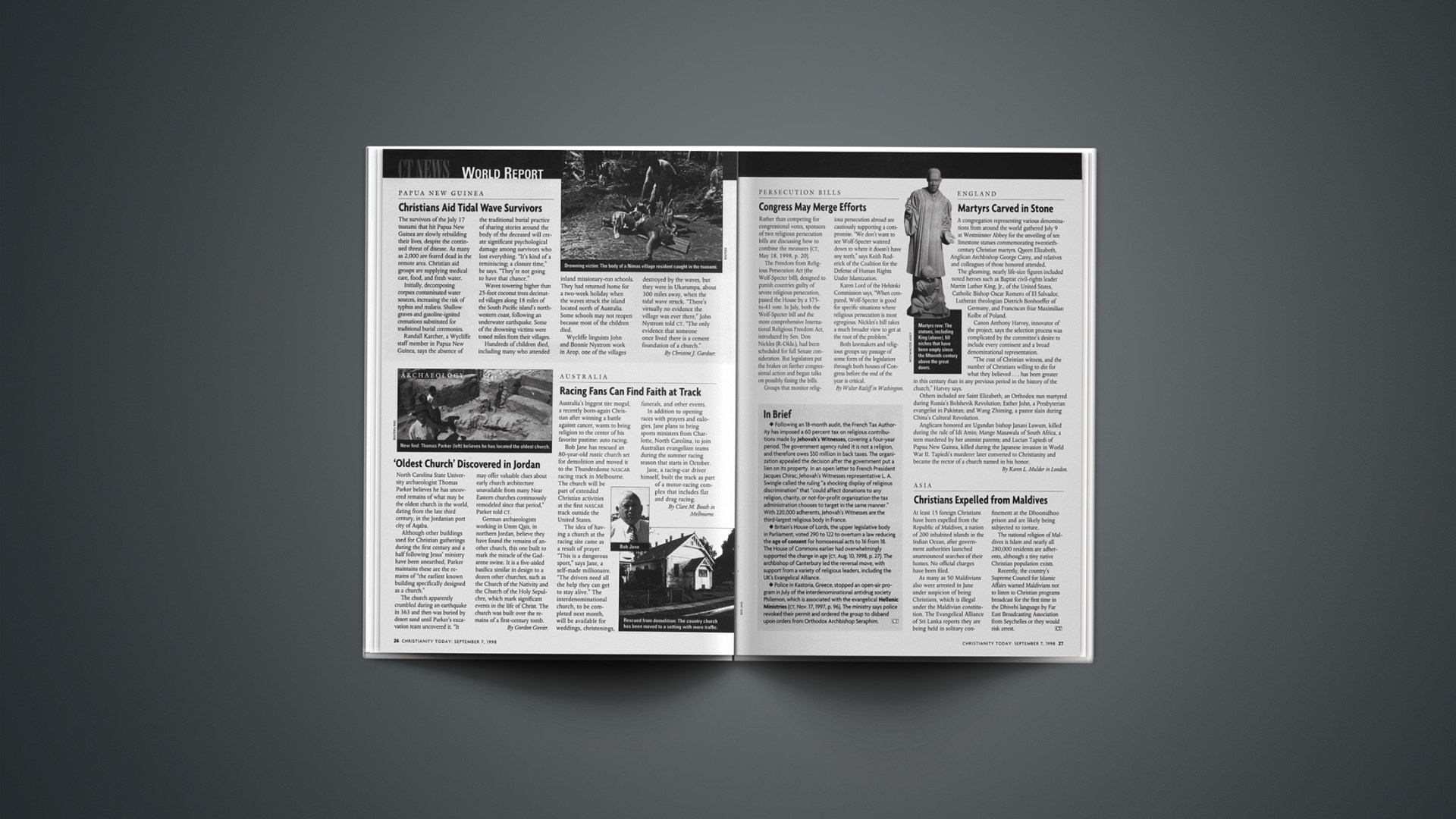The survivors of the July 17 tsunami that hit Papua New Guinea are slowly rebuilding their lives, despite the continued threat of disease. As many as 2,000 are feared dead in the remote area. Christian aid groups are supplying medical care, food, and fresh water.
Initially, decomposing corpses contaminated water sources, increasing the risk of typhus and malaria. Shallow graves and gasoline-ignited cremations substituted for traditional burial ceremonies.
Randall Karcher, a Wycliffe staff member in Papua New Guinea, says the absence of the traditional burial practice of sharing stories around the body of the deceased will create significant psychological damage among survivors who lost everything. “It’s kind of a reminiscing; a closure time,” he says. “They’re not going to have that chance.”
Waves towering higher than 25-foot coconut trees decimated villages along 18 miles of the South Pacific island’s northwestern coast, following an underwater earthquake. Some of the drowning victims were tossed miles from their villages.
Hundreds of children died, including many who attended inland missionary-run schools. They had returned home for a two-week holiday when the waves struck the island located north of Australia. Some schools may not reopen because most of the children died.
Wycliffe linguists John and Bonnie Nystrom work in Arop, one of the villages destroyed by the waves, but they were in Ukarumpa, about 300 miles away, when the tidal wave struck. “There’s virtually no evidence the village was ever there,” John Nystrom told CT. “The only evidence that someone once lived there is a cement foundation of a church.”
Copyright © 1998 Christianity Today. Click for reprint information.










